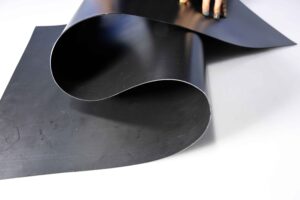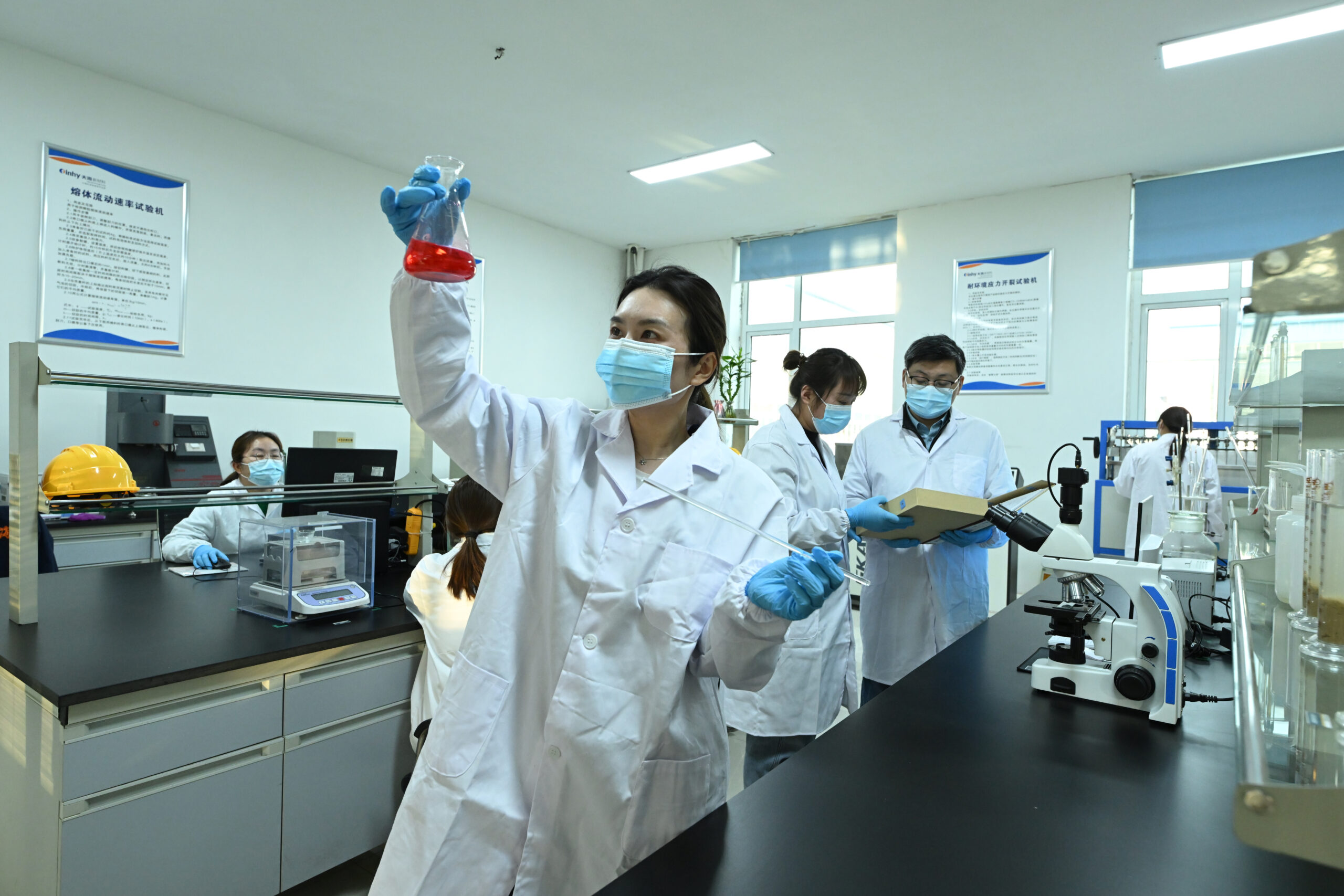Geomembrane: Focus on solving your pain points and provide comprehensive protection!
Anti-seepage: Effectively prevent water penetration, solve the damage of groundwater or moisture to buildings and soil, and protect the safety of houses and infrastructure.
Anti-UV aging: Made of weather-resistant materials, it can effectively resist ultraviolet radiation, prolong the service life of the geomembrane, and reduce maintenance and replacement costs.
Tensile strength: With excellent tensile properties, it can withstand external forces such as soil movement and earthquakes, and enhance the stability and erosion resistance of the soil.
Environmental protection and health: non-toxic and tasteless, in line with environmental protection standards, will not cause pollution to soil, water and human health, can be used with confidence.

Choose a geomembrane for total protection and peace of mind. Solve your soil problems for a safe and secure environment.
Geomembrane is a waterproof material used in civil engineering and environmental engineering. It is usually made of polymer materials such as polyethylene (PE) or polypropylene (PP), which has the characteristics of impermeability, chemical corrosion resistance and aging resistance.
Geomembranes are widely used in water conservancy, transportation, construction, environmental protection and other fields to prevent leakage and pollution of soil, surface water or groundwater. It can be used in engineering projects such as artificial lakes, dams, rivers, tunnels, landfills, etc., to protect and strengthen the soil.

Geomembrane quality inspection standards
The quality inspection standards of geomembrane can vary according to different countries or regions. The following are some common quality inspection standards of geomembrane:
GB/T 17643-2011 “Standard for Chemical Resistance Test Methods of Geosynthetics”: This standard specifies the performance test methods of geosynthetics (including geomembranes) under the action of different chemical media.
GB/T 17642-2018 “Test methods for physical properties of geosynthetics”: This standard includes test methods for physical properties of geosynthetics (including geomembranes), such as tensile properties, tear properties, puncture properties, etc.
ASTM D5885-18 “Standard Test Method for Oxidative Induction Time of Polyolefin Geosynthetics by High-Pressure Differential Scanning Calorimetry”: This standard is suitable for testing the oxidation induction time of geosynthetics (including geomembranes) by high-pressure differential scanning calorimetry. to evaluate its anti-aging properties.
EN ISO 10319:2015 “Geosynthetics – Wide-width tensile test”: This standard gives the test method for evaluating the wide-width tensile properties of geosynthetics (including geomembranes).
What are the quality inspection items of geomembrane?
Thickness test: Use a special thickness gauge or micrometer to measure the thickness of the geomembrane to verify whether it meets the specified thickness requirements.
Physical performance test:
Tensile performance test: Through the tensile test, the parameters such as the tensile strength and elongation at break of the geomembrane under different forces are measured.
Tear performance test: used to evaluate the tear strength of geomembrane, commonly used test methods include isokinetic tear test and dynamic tear test.
Puncture performance test: Use a puncture needle or drill to conduct a puncture test on the geomembrane to measure its ability to withstand puncture force.
Chemical durability test: It is used to evaluate the stability and durability of geomembrane under the action of different chemical media (such as acid and alkali, solvent, etc.). Commonly used test methods include immersion test, immersion test, etc.
Flame retardant performance test: Some application scenarios require geomembrane to have certain flame retardant performance. The flame retardant performance of geomembrane is evaluated by burning test or flame retardant grade test.
Environmental adaptability test: including low temperature frost resistance, high temperature aging performance, etc., used to evaluate the performance and adaptability of geomembranes under different environmental conditions.
It should be noted that the specific geomembrane quality inspection items may vary according to product standards, project requirements and application scenarios. In actual testing, it is recommended to refer to relevant standards and specifications, and entrust a professional laboratory to test to ensure that the quality of the geomembrane meets the requirements.
Contact Us
[wpforms id=”40″]
Author
-

Founded in 2002, Tinhy's team focuses on the manufacturing, marketing, installation, application and research and development of geosynthetic materials.
View all posts




